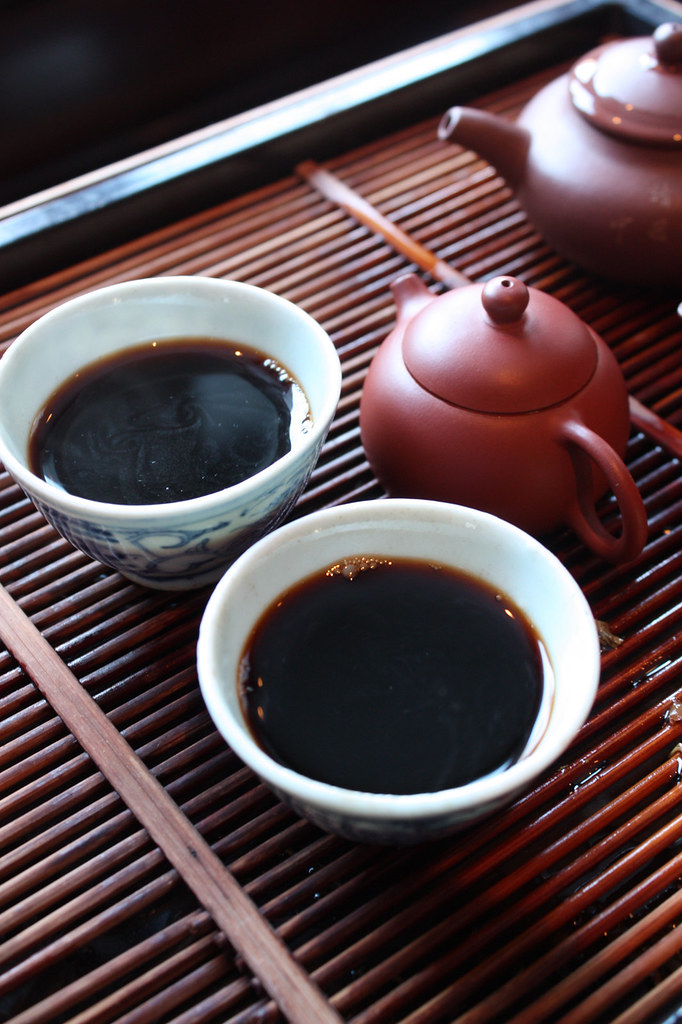I remember when I first started out drinking tea and learning about it, a very knowledgeable friend told me that puerh (by which is meant aged puerh — new tea was not in the discussion) tastes best BEGINNING with the 5th infusions. Note that we are talking the BEGINNING of the good tasting part is the fifth infusion onward, going to 10th, 15th, etc. Everything before was not very good, and in fact, the friend rinses two or three times sometimes for older tea, and throwing those away or using them to help age pots.
I think most people, having been raised on the “infuse and throw” culture, will wonder how it could be that a tea can start to taste its best on the fifth infusion. Many I know don’t even necessarily get to the fifth before giving up on a tea.
I think what happens here and what bears repeating is that in the first few infusions, what’s really going into the liquid is what can be called the “storage” taste. Different storage facilities taste different — find two loose traditionally stored puerh, say, from two different stores, and they will taste vastly different. Find two traditionally stored puerhs from the same store, and as long as they have stored both, the first few cups will taste very similar. What happens afterwards is what’s really in the tea — the true taste of the tea, not the storage.
One of the reasons why some people hate traditionally stored tea is the storage taste — it’s not going to go away no matter what you do. If you drink enough infusions though, it does weaken it sufficiently so that you can get to the tea underneath it. The taste is obviously changed, but for better tea, there will be that perfume taste that can be quite obvious in a dry stored tea but less so in a traditionally stored one, but it should still be there.
These days I’ve been drinking my puerh for two days at a time — with the second day being a contiuation of the first. I am using a larger pot with a relatively careless way of brewing them, and they are all traditionally stored, loose or broken tea. While the taste is much stronger on the first day, the second day is often much sweeter and, sometimes, has that nice, sweet quality to it that is ultimately what you’re after.
I’m not saying that that’s the only way to appreciate puerh, but I do think that to focus too much on the first few cups can be very misleading sometimes, especially when it comes to puerh that has been aging for a bit. While it is true that for dry stored tea the effect of storage might be a bit lower, it is still a mitigating factor. What other teas are stored along the cake you’re drinking, for example, will affect the way it tastes/smells the first few cups. That, in turn, can affect your impression of the tea if the first few cups take too much precedence in the taster’s mind.




 RSS - Posts
RSS - Posts
I took you at your suggestion and have been reading some of your old post-Covid posts. I haven’t been to…